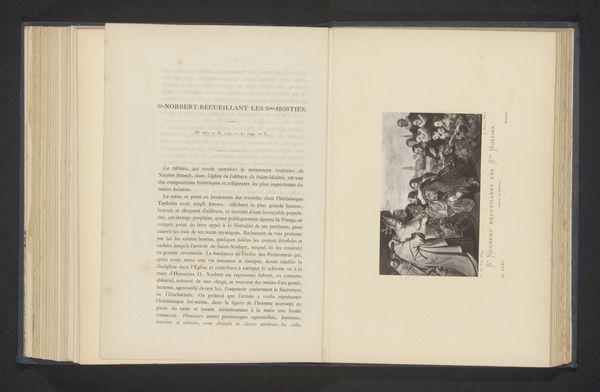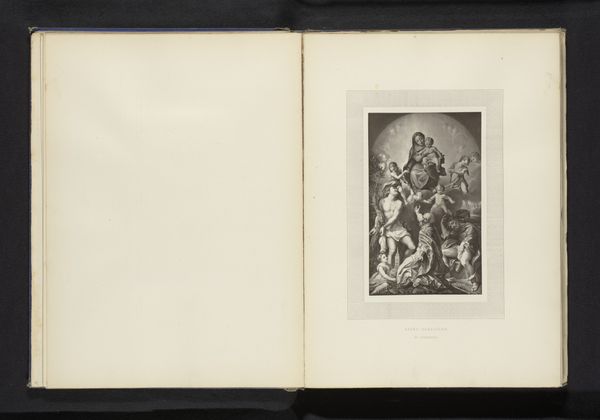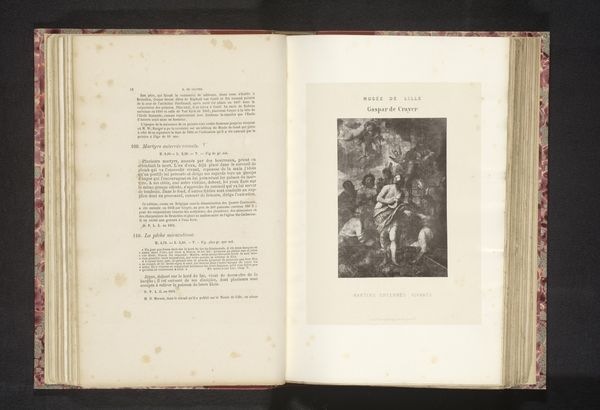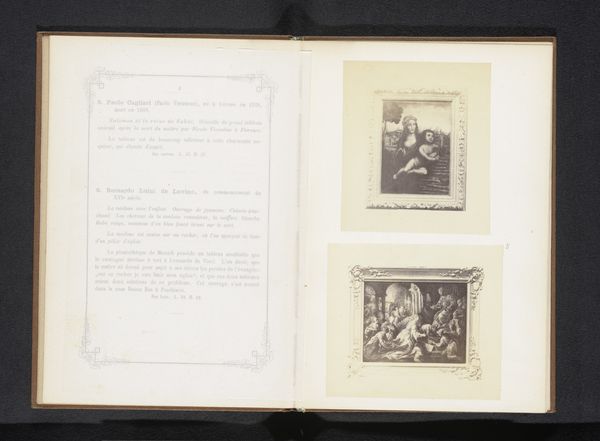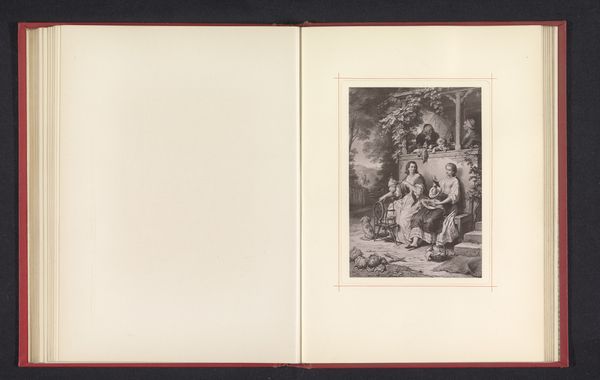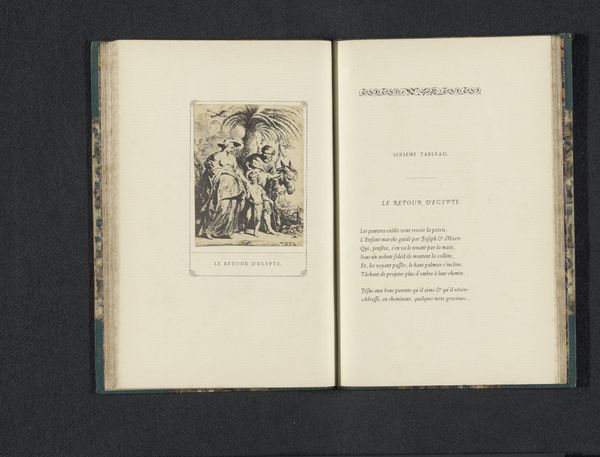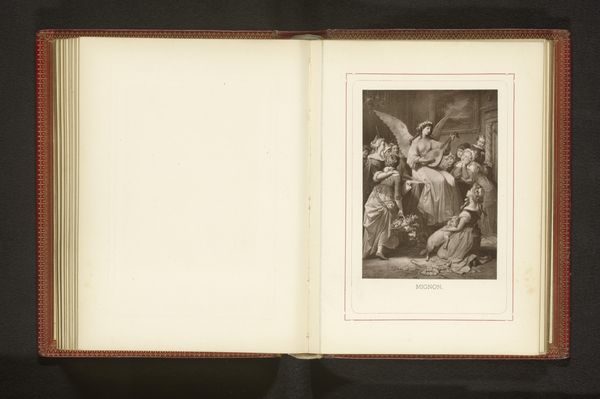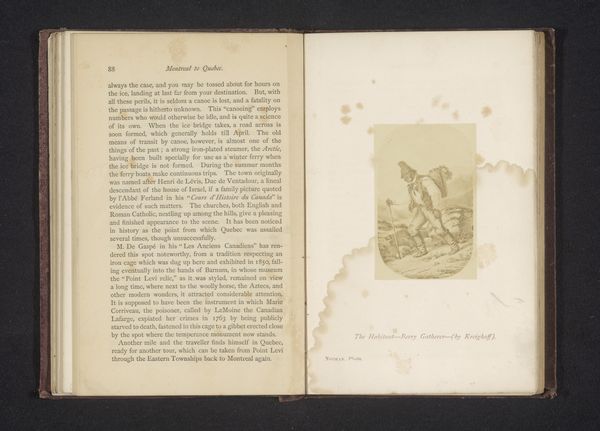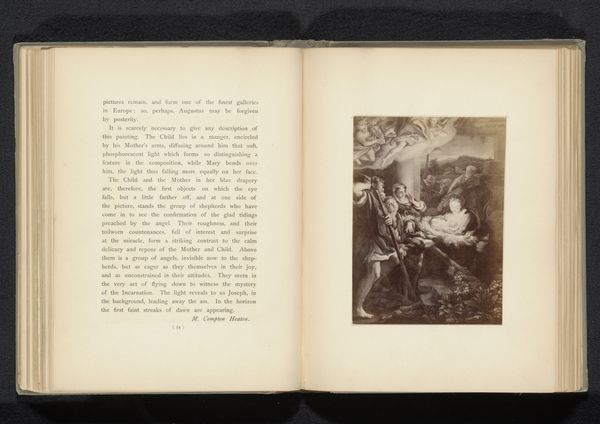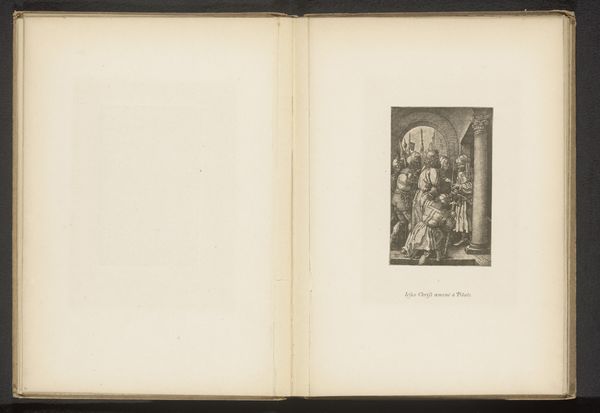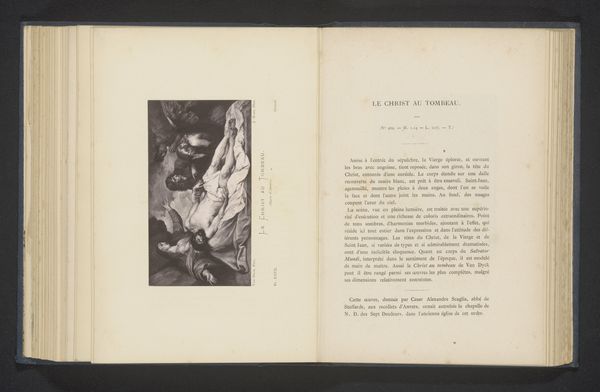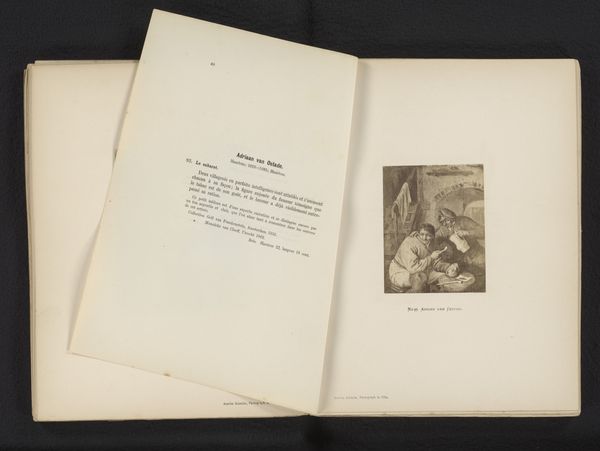
Fotoreproductie van een schilderij, voorstellende Maria verschijnt aan de heilige Bernardus van Clairvaux before 1890
0:00
0:00
print, paper, engraving
# print
#
paper
#
history-painting
#
engraving
Dimensions: height 95 mm, width 87 mm
Copyright: Rijks Museum: Open Domain
Curator: This compelling image presents a photogravure of a painting titled "Maria verschijnt aan de heilige Bernardus van Clairvaux"– "The Virgin Appearing to Saint Bernard of Clairvaux". Dating from before 1890, this piece, made with engraving on paper, offers an intriguing moment frozen in time. Editor: Immediately, the monochrome of the photogravure adds a level of drama. The tight grouping of figures really conveys a sense of collective awe or possibly fear in the presence of something divine. The density of line work makes the atmosphere almost tangible. Curator: Indeed. Saint Bernard, central to the composition, kneels, gazing upward as the Virgin Mary, bathed in ethereal light, appears before him. In religious art, the Virgin is a powerful signifier for intercession, grace and purity, offering believers hope for redemption. We should keep in mind Bernard himself who symbolizes devout study. He was famous for writing many influential books and sermons. The iconography suggests a recognition of divine wisdom intertwined with knowledge attained through earthly means. Editor: Considering it’s a reproduction rather than the original painting, I'm curious about the role of printmaking. The ability to disseminate images like these on paper speaks volumes about religion as a product. The artist clearly understood that the accessibility of prints gave powerful leverage in shaping perception of divine concepts for many people. And of course this process – from painting, to photo, to engraving – transforms a singular artwork into something more accessible, widespread and reproducible. It is never the same as experiencing the 'original' piece. Curator: Exactly. The very choice of reproducing the original indicates that the symbol must extend far beyond any immediate sensory interaction. It transcends its physical limits, becoming a portable reminder and affirmation. By the late 19th century, many like these works democratized art appreciation; many religious adherents might otherwise have never gotten to observe artistic expressions of their own culture and spiritual practices. Editor: What intrigues me, then, is how those viewers engaged with it not just as a spiritual signifier, but as a crafted artifact. Its existence is an extension of someone's manual labor–the hands that engraved this work, using particular methods and materials that dictate a look distinct from painting. Curator: Certainly. The work resonates not just as a piece of religious significance, but as an indicator of evolving spiritual iconography across media. It allows to think deeper about the past through a contemporary lens. Editor: Yes, analyzing process invites us to reflect not just on iconography, but production–which is essential in understanding its endurance throughout time.
Comments
No comments
Be the first to comment and join the conversation on the ultimate creative platform.
